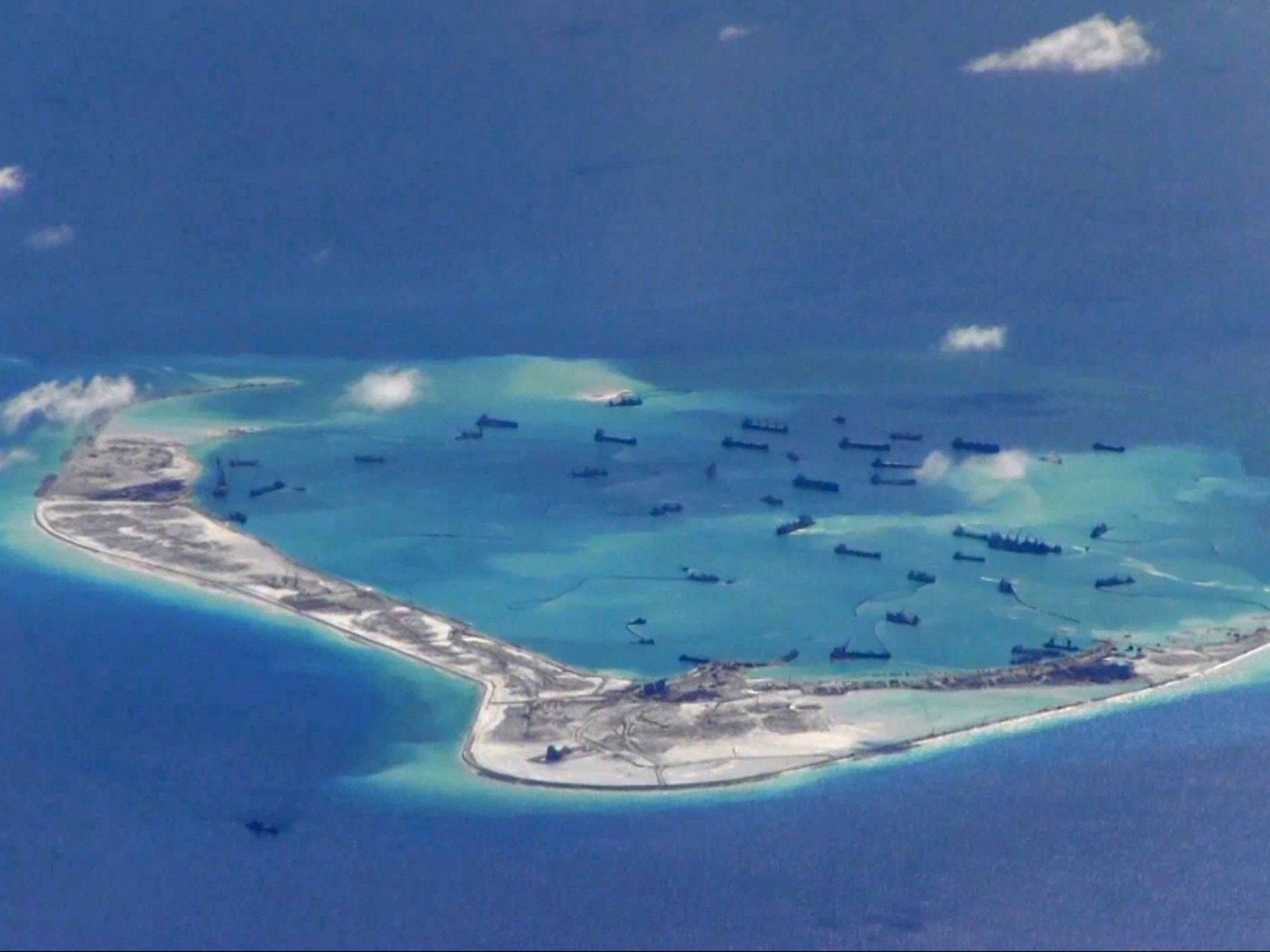South China Sea: US warship sails close to disputed Mischief Reef
USS Dewey travelled within 12 nautical miles of the man-made island

Your support helps us to tell the story
From reproductive rights to climate change to Big Tech, The Independent is on the ground when the story is developing. Whether it's investigating the financials of Elon Musk's pro-Trump PAC or producing our latest documentary, 'The A Word', which shines a light on the American women fighting for reproductive rights, we know how important it is to parse out the facts from the messaging.
At such a critical moment in US history, we need reporters on the ground. Your donation allows us to keep sending journalists to speak to both sides of the story.
The Independent is trusted by Americans across the entire political spectrum. And unlike many other quality news outlets, we choose not to lock Americans out of our reporting and analysis with paywalls. We believe quality journalism should be available to everyone, paid for by those who can afford it.
Your support makes all the difference.A US Navy warship sailed close to an artificial island built by China in the South China Sea, the first such challenge to Beijing in the strategic waterways since President Donald Trump took office.
Speaking on the condition of anonymity, officials said the USS Dewey travelled within 12 nautical miles of Mischief Reef in the Spratly Islands, territory at the centre of a dispute between China and its neighbours.
China claims almost all of the South China Sea but some islands and reefs are also claimed by other nations, including Brunei, Malaysia, the Philippines, Vietnam and Taiwan.
Last year, an international arbitration court in The Hague ruled against China’s claims to sovereignty over large swathes of the South China Sea.
The US has claimed this was a freedom of navigation operation in international waters, which are carried out throughout the world and are separate from political considerations.
"We operate in the Asia-Pacific region on a daily basis, including in the South China Sea. We operate in accordance with international law," Pentagon spokesman Captain Jeff Davis said in a statement.
The US has criticised what it sees as China’s effort to limit freedom of navigation in the strategic waters particularly after it built man-man islands and set-up military positions.
US allies and partners in the region had grown anxious as the Trump administration held off carrying out South China Sea operations during its first few months in office.
Under the previous administration, the US Navy conducted several voyages through the South China Sea.
It is thought the move will anger China at a time when Mr Trump is seeking cooperation to rein in North Korea’ nuclear and missile programme.
Last week, two Chinese jets fighters intercepted an US aircraft over the East China Sea, which according to military sources was on a mission to monitor radiation levels in the area.
The US described the intercept as “unprofessional” but China did not comment on that particular incident.
Tensions between the two superpowers have appeased since Mr Trump hosted Chinese President Xi Jinping for a summit at the Florida resort of Mar-a-Lago last month and the US President praised President Xi for efforts to restrain North Korea.
During the 2016 presidential campaign, Mr Trump accused Beijing of stealing US jobs with unfair trade policies, manipulating its currency and militarising parts of the South China Sea.
In February, a US Navy spy plane and a Chinese military aircraft came within 1,000 feet of each other over the South China Sea. At the time, US officials called it an “unsafe” close encounter.
Subscribe to Independent Premium to bookmark this article
Want to bookmark your favourite articles and stories to read or reference later? Start your Independent Premium subscription today.
Join our commenting forum
Join thought-provoking conversations, follow other Independent readers and see their replies
Comments